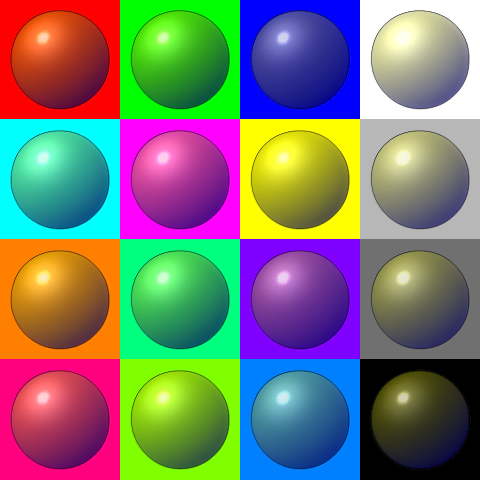Post Archive
SIGGRAPH 2012 - Day 1
Too Much to See
The first day may be a little light on content, but it does look to be an exciting and promising SIGGRAPH (as much as I may be a judge of these things, given that this is only my second time attending). I have already bonded over VFX while trying to find the conference center, and have been completely unable to figure out which sessions to give my attention, ergo:

Finally trying to schedule my day at #SIGGRAPH, and I need to choose between 5 things at the same time. #sadtrombone
The focus of the evening was the Technical Papers Fast Forward, in which 132 papers were presented with only one minute for each (with a stretch break halfway through with an oddly appropriate soundtrack). This year I had the joy of seeing some of my own work presented, even if it wasn't the research. I look forward to watching the full presentation of CrossShade tomorrow and seeing what they ended up doing with my shading pipeline, part of which I have talked about previously.
New Project: Haikuize
I just started a new toy project for extracting Haikus from straight prose. It is currently in very rough shape and not very capable, but it is still fun to play with.
Choice examples from Emily Carr's "Klee Wyck" include:
Beaches Trees Held Back By Rocky Cliffs Pointed Fir Trees Climbing In Dark Tipped Forward In Sleep And Rolled Among The Bundles The Old Man Shipping The Sun And The Moon Crossed Ways Before Day Ended By And By The Bulls
Another example from Sun Tzu's "The Art of War":
Retained In Command The General That Hearkens Not To My Counsel
Watch the project on GitHub to see it develop.
Pseudo suExec with PHP Behind Nginx
For those who don't want to run more than one php-cgi... for some reason.
I recently started transitioning all of the websites under my management from Apache to nginx (mainly to ease running my Python webapps via gunicorn, but that is another story).
Since nginx will not directly execute PHP (via either CGI or nginx-managed FastCGI), the first step was to get PHP running at all. I opted to run php-cgi via daemontools; my initial run script was fairly straight forward:
1 2 | #!/usr/bin/env bash exec php-cgi -b 127.0.0.1:9000 |
Couple this with a (relatively) straight forward nginx configuration and the sites will already start responding:
server {
listen 80;
server_name example.com
root /var/www/example.com/httpdocs;
index index.php index.html;
fastcgi_index index.php;
location ~ \.php {
keepalive_timeout 0;
include /etc/nginx/fastcgi_params;
fastcgi_param SCRIPT_FILENAME $document_root$uri;
fastcgi_pass 127.0.0.1:9000;
}
}
The tricky part came when I wanted to run PHP under the user who owned the various sites. I could have (and perhaps should have) opted to spin up a copy of php-cgi for each user, but I decided to try something a little sneakier; PHP will set its own UID on each request.
Friendlier (and Safe) Blog Post URLs
Until very recently, the URLs for individual blog posts on this site looked something like:
http://mikeboers.com/blog/601/friendlier-and-safe-blog-post-urls
The 601 is the ID of this post in the site's database. I have always had two issues with this:
- The ID is meaningless to the user, but it is what drives the site.
- The title is meaningless to the site (you could change it to whatever you want), but it is what appears important to the user.
What they would ideally look like is:
http://mikeboers.com/blog/friendlier-and-safe-blog-post-urls
But since I tend to quickly get a new post up and then edit it a dozen times before I am satisfied (including the title) the URL would not be stable, and implementations I have seen in other blog platforms would force the URL to retain the original title of the post, not the current title.
So I have come up with something more flexible that gives me URLs very similar to what I want, but allow for (relatively) safe changes in the title of the post (and therefore the URL).
Ultimate physical limits to computation
Lloyd, Seth. 2000. Ultimate physical limits to computation. Nature 406:1047–1054.
I just re-read part of this classic CS paper (PDF), and the figure captions at the back stood out to me as being particularly hilarious:
Figure 1: The Ultimate Laptop
The ‘ultimate laptop’ is a computer with a mass of one kilogram and a volume of one liter, operating at the fundamental limits of speed and memory capacity fixed by physics. [...] Although its computational machinery is in fact in a highly specified physical state with zero entropy, while it performs a computation that uses all its resources of energy and memory space it appears to an outside observer to be in a thermal state at approx. \( 10^9 \) degrees Kelvin. The ultimate laptop looks like a small piece of the Big Bang.
Figure 2: Computing at the Black-Hole Limit
The rate at which the components of a computer can communicate is limited by the speed of light. In the ultimate laptop, each bit can flip approx. \( 10^{19} \) times per second, while the time to communicate from one side of the one liter computer to the other is on the order of 10^9 seconds: the ultimate laptop is highly parallel. The computation can be sped up and made more serial by compressing the computer. But no computer can be compressed to smaller than its Schwarzschild radius without becoming a black hole. A one-kilogram computer that has been compressed to the black hole limit of \( R_S = \frac{2Gm}{c^2} = 1.485 \times 10^{−27} \) meters can perform \( 5.4258 \times 10^{50} \) operations per second on its \( I = 4\pi\frac{Gm2}{ln(2hc)} = 3.827 \times 10^{16} \) bits. At the black-hole limit, computation is fully serial: the time it takes to flip a bit and the time it takes a signal to communicate around the horizon of the hole are the same.
The Gooch Lighting Model
"A Non-Photorealistic Lighting Model For Automatic Technical Illustration"
I've recently been toying with the Gooch et al. (1998) non-photorealistic lighting model. Unfortunately, the nature of the project does not permit me to post any of the "real" results quite yet, but some of the tests have a nice look to them all on their own.
My implementation takes a normal map and colour map, e.g.:


This is the result from those inputs:

Cleaning Comments with Akismet
My site recently (finally) started to get hit by automated comment spam. There are few ways that one can traditionally deal with this sort of thing:
- Manual auditing: Manually approve each and every comment that is made to the website. Given the low volume of comments I currently have this wouldn't be too much of a hassle, but what fun would that be?
- Captchas: Force the user to prove they are human. ReCaptcha is the nicest in the field, but even it has been broken. But this doesn't stop human who are being paid (very little).
- Honey pots: Add an extra field1 to the form (e.g. last name, which I currently do not have) that is hidden by CSS. If it is filled out one can assume a robot did it and mark the comment as spam. This still doesn't beat humans.
- Contextual filtering: Use Baysian spam filtering to profile every comment as it comes in. By correcting incorrect profiles we will slowly improve the quality of the filter. This is the only automated method which is able to catch humans.
I decided to go with the last option, as offered by Akismet, the fine folks who also provide Gravatar (which I have talked about before). They have a free API (for personal use) that is really easy to integrate into whatever project you are working on.
Now it is time to try it out. I've been averaging about a dozen automated spam comments a day. With luck, none of them will show up here.
*crosses his fingers *
Update:
I was just in touch with Akismet support to offer them a suggestion regarding their documentation. Out of nowhere they took a look at the API calls I was making to their service and pointed out how I could modify it to make my requests more effective in catching spam!
That is spectacular support!
-
The previously linked article is dead as of Sept. 2014. ↩
New Demo Reel
For the first time since 2008, I have a new demo reel. This one finally has a quick breakdown of Blind Spot, and a lot of awesome shots from The Borgias.
Fangoria writes about "Blind Spot"
More love for Blind Spot, as Matt Nayman gave an interview for Fangoria that was just posted!
He spoke about me working on the film:
The most difficult part of BLIND SPOT to complete was postproduction. The movie owes a lot of its power to my wonderful postproduction supervisor and co-producer, Mike Boers. He’s a fantastic visual effects artist, and was integral to bringing this film to life even during the scripting stage. We spent about five months working together on the CGI and compositing, using some beefy home computers and a lot of state-of-the-art software. Five minutes is a long time for any visual effects shot to hold up, and ours had to fill two-thirds of the screen for the entire movie. I am very proud of the effects we achieved for BLIND SPOT on such a minuscule budget.
Thanks, Matt!
Torontoist writes about "Blind Spot"
The Torontoist just posted a short article on the Toronto After Dark Film Festival, mentioning Blind Spot as "one of [their] favorites this year". They write:
[The] short speaks for itself: composed of a single shot, the film took a day to shoot at Pie in the Sky but post-production special effects took eight months to complete, between Nayman and his longtime collaborator, Mike Boers. Nayman hoped to keep the film ambiguous, as it grapples with a man so engrossed with everyday minutiae he doesn’t notice an apocalypse occurring outside his car window. “I’m hoping,” he says, “that some people read it as sci-fi and some people read it as darkly funny.” Sharp and aptly observed, audiences will read it as good filmmaking either way.
View posts before October 19, 2011
